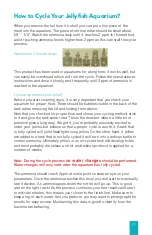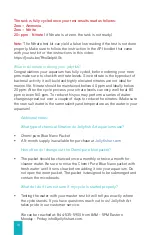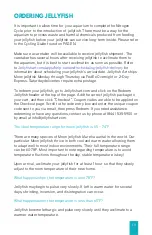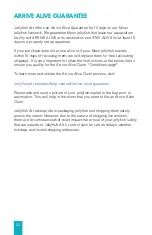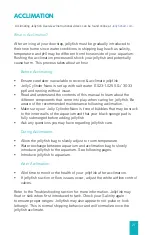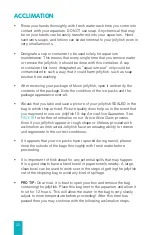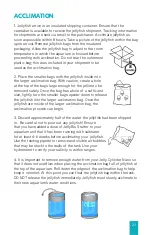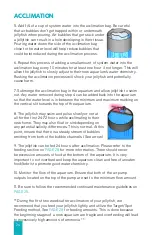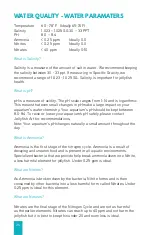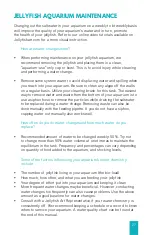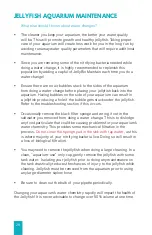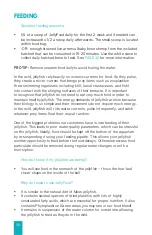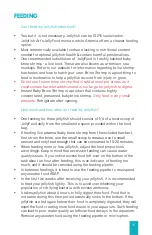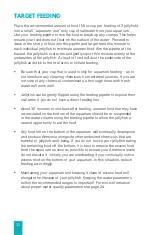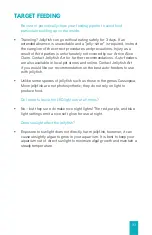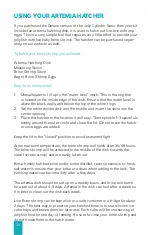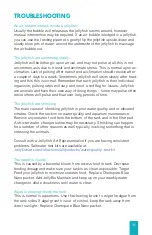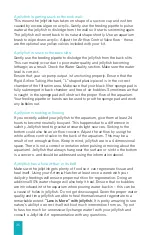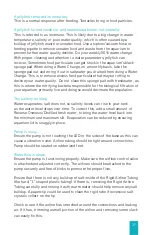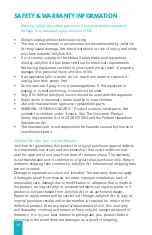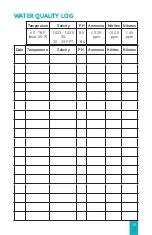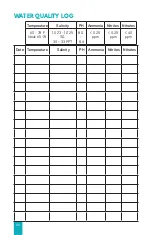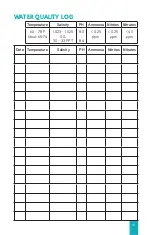
29
JELLYFISH AQUARIUM MAINTENANCE
Instructional videos available online in our “Support” section.
Know when to service your aquarium! Keep a record of when you conduct
a Water Change or gather water quality parameters to maintain regime. A
clean, well maintained aquarium will promote jellyfish growth and activity.
Daily Responsibilities:
• Feed jellyfish. Refer to the feeding section for more information. Ensure
that the air pump is running and promoting the proper flow of the
aquarium.
• Check to make sure the water level is correct. It should be within the
length of the topmost vertical slit of your Jelly Cylinder Nano.
• Monitor jellyfish for any changes in behavior
Weekly Responsibilities:
• Conduct a 50% Water Change if nessecary, always ensuring that the
new water is the same temperature and salinity as the current aquarium
water. Refer to the Water Change section for more guidelines. During
a water change you will want to remove any uneated jellyfish food and
detritus. A siphon, or “vacuum hose,” is the easiest way to remove any
uneaten food or debris from the bottom of your aquarium. The feeding
pipette can also be used to remove particulates from the aquarium
manually if you do not have a siphon hose. A siphon hose can be found
on our website or at most pet stores. Wiping down interior surfaces
with cleaning brush prior to doing a water change will allow for easy
removal of algae buildup.
• Gather water quality information
Monthly Responsibilities:
• Replace the Chemi-pure Blue Nano packet placed in the back of the
aquarium. Remember to rinse the new packet under fresh water
until the water runs clear before insertion to remove dust from
manufacturing. Do not open the inner packet! The Chemi-pure Blue
Nano packet needs to be submerged under water to work properly.
• When conducting a Water Change, periodically (every 6 weeks) take out
the black foam sponge found in the back of the aquarium and gently ring
it within the system water that has been removed. This is to dislodge
any food or debris that may have accumulated. Remember that the black
sponge is the home for the beneficial bacteria, treat the sponge gently
and do not let it dry out. The goal is to remove loose debris but not to
make it spotless.
Do not clean this sponge pad with fresh water as this
will harm your bacteria population.



